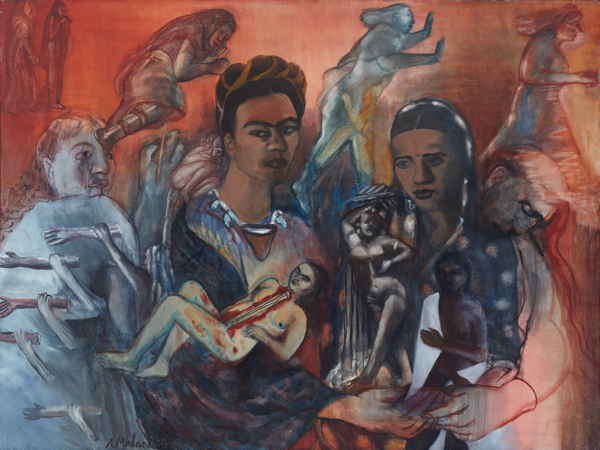
| ||
| Level 300 | ||
| ||
| Level 400 | ||
|
| ||
All times, days and teaching locations should be confirmed in Wolverine Access | ||
| History of Art | ||
| LS&A | ||
| University of Michigan | ||
| Back to the list of courses |

While modern and also contemporary art are widely understood to be global the concepts demanded for this understanding are still very much works in progress. This class will simultaneously explore the fascinating and variegated modern and contemporary art movements that have taken place across Mexico to South Africa, India, Australia and China, and the kind of concepts required to think modern and contemporary art in a truly globalized way.
One theme of the class will be what it means for modern art to arise in conditions of austerity. Nothing could be greater than the contrast with the conditions that gave rise to modern art in the Paris of the nineteenth century and in Europe generally. Modern art was born in mid nineteenth century Paris in a highly robust art world of galleries, museums, collectors, critics, collectors, a world of bourgeois literacy and money, in what could be called a rising economy. Then what could it mean for art to arise in twentieth century conditions where, at least until the globalization of wealth circa the 1980s there is no robust art world, where the museums are few, collectors fewer, critics rare, the possibilities of exhibition small, and where neo-colonial condescension restricted circulation of "non-Western" modern art (as it was then called) from the museums, galleries and collections of "the west".
Since modern art in much of the world arose in conversation with European modernism and the European avant-gardes the European story will be part of the class. Conversely when European modernism is studied the importance of global artifacts, and colonial ideas, on its formation (the African mask, Chinese Art) will be discussed: European art is also the result of global influence.
While much of modern art outside of Europe and America arises in conversation with Europe, is also important to point to those traditional forms of carving (in southern Africa), painting (in Aboriginal Australia), etc. which have evolved organically, without any major influence from European modernism, and evolved to address modern life through their own traditional lenses and anxieties.
A third theme will be the way the culture of financial capital around globalization has changed art markets and the production of art, leading both to opportunities and conflicts especially for the "global south".
Finally, we will pay close attention to the diversity of art projects, and their defining conditions, across the world, while also seeking some understanding of their similarities, linked to nationalism, decolonization, postcolonialism and now, a shared sense of global citizenship.
HISTART Distribution Requirements: Sub-Saharan Africa, Asia, Modern and Contemporary